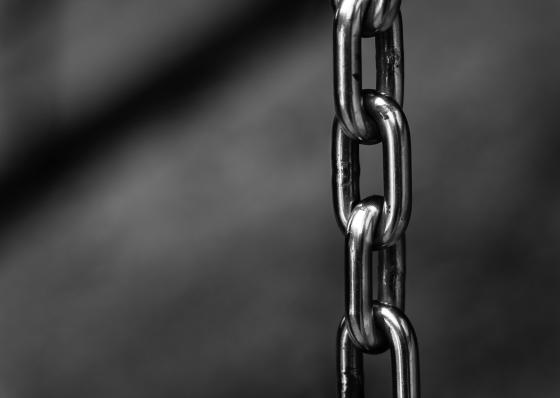Microtext for Anticounterfeiting – Everything You Need to Know

Questions?
Talk to a Digital Product Passport expert about your challenges - it's completely free.

The counterfeit product market is growing at an alarming rate nowadays, with 7 out of 10 individuals being deceived into buying fake goods. Even currency counterfeiting is becoming more advanced by the day, making it difficult to detect a forgery.
Microtext has become a common way to prevent counterfeits, the writing in extremely small letters making it almost impossible to replicate. This guarantees the product's authenticity, as the average counterfeiter can't make a replica.
However, not everyone understands its technology and limitations. For this reason, we will go into detail about the technique, applications, and limits, giving you a better understanding of this global concept. In this article, you will discover how microtext protects a brand, adding an extra layer of security.
What Is Microtext for Anticounterfeiting?
Microtext for anticounterfeiting is the process of using a very small text as a security measure for preventing counterfeiting and forgery. The text itself is usually so small that it is invisible to the naked eye (along with copiers and scanners).
Source: https://www.goodfon.com/macro/wallpaper-download-1920x1080-badfon-dollar-dengi-mikrotekst.html
To see it, you would require magnification tools. When viewed, microtext can show as a line of text or coloring within a symbol, but zooming shows text that is smaller than 0.2mm.
This type of text was originally used in government-issued documents to prevent unlawful replication. Today, it has become an essential anticounterfeiting measure, adding an extra layer of security that can’t be duplicated without the right tools.
Common Microtext Applications
Microtext use has become critical in various applications, especially when it comes to health and government-related matters. This can include the following:
1. Currency
Currency was one of the first objects to benefit from microtext anticounterfeiting, keeping the population from forging money. The text is subtly embedded within the banknotes, often around the borders or within their design.
2. Legal Documents
Important documents such as certificates could feature microtext proving they are legitimate. Considering that around 2 million educational degrees in the US are fake, the presence of microtext could prevent fraud.
3. Identity Documents
To prevent identity fraud, documents such as driver’s licenses, passports, and ID cards often incorporate microtext. This verifies the authenticity of the document while preventing forgery.
4. Product Packaging
High-end products like electronics, luxury goods, and pharmaceuticals could also use microtext. Depending on the manufacturing process, it can appear on the packaging or an inner component of the product.
Key Characteristics of Microtext
The unique properties of microtext make it very difficult to replicate, which is why it is a widespread anticounterfeiting measure. Here are its key factors:
· Small Size
The characters in microtext are often smaller than 1mm and only readable through a magnifying glass. This can make it challenging for a counterfeiter to replicate it, as the average camera cannot catch the text. Even if it’s printed by counterfeiters, the text can easily become distorted.
· High-Precision Printing Technique
High-quality printing technology is required to create microtext, and this is usually regulated by the government. Advanced training and skills are also needed to make such tiny texts. Even a minor deviation can result in differences, which anticounterfeiting authenticity tools can easily spot.
· Pattern Complexity
Microtext is not just added within lines on the border – it is also hidden within the design. It can be layered in the pattern, using different sizes of microtext to appear as shading. Its layered placement makes it tricky to reproduce.
Challenges and Limitations of Microtext in Anticounterfeiting
Microtext is one of the most sophisticated measures to prevent counterfeiting but also has its limitations. This can raise challenges in ensuring that the text can be verified by the end user, including:
· Precision in Printing: Microtext requires precise printing skills, along with advanced technologies. Counterfeiters can try to replicate it, but even experts struggle to create an accurate replica. Even when used for legitimate purposes, it can lead to technical difficulties.
· High Cost: Microtext creation requires advanced technology and high-quality materials that could raise the costs. Implementing the microtext at a larger scale could exacerbate expenses, creating a financial strain. The technology is so expensive and heavily regulated that it's often impossible for the average company to use it. You'd have to be a big brand name to afford it.
· Verification Difficulties: The size of microtext is often too small to be verified without proper assistance. This causes many counterfeited products to fly under the radar, as end users do not have the means or training to verify them. Ultimately, if the end consumer comes across a counterfeit version of your product, they could easily be fooled by it. More than 23 percent of users unwittingly bought such products simply because they could not authenticate them.
You can bypass these limitations using an effective, user-friendly verification system such as AuthentifyIt. With this app, you can authenticate a product through Blockchain or NFC, enabling traceability and offering a complementary solution. The blockchain solution is also less costly and easier to read by the end consumer, as it does not require them to invest in fancy technology. All it takes is a smartphone with a QR code scanner.
In the end, by combining microtext with modern authenticating technologies, end users can check whether or not a product is legitimate before buying it. With AuthentifyIt, authenticity is guaranteed.
Conclusion
Microtext can be a very effective way to determine the authenticity of an item, regardless of its nature. However, without the right technology, forgeries can still be sold worldwide, affecting your brand’s image. This is why it is a good idea to use the AuthentifyIt technology, which relies on Blockchain, QR codes, and NFC chips. Call one of our anticounterfeiting experts today, and we’ll find the right solution to protect your brand!
